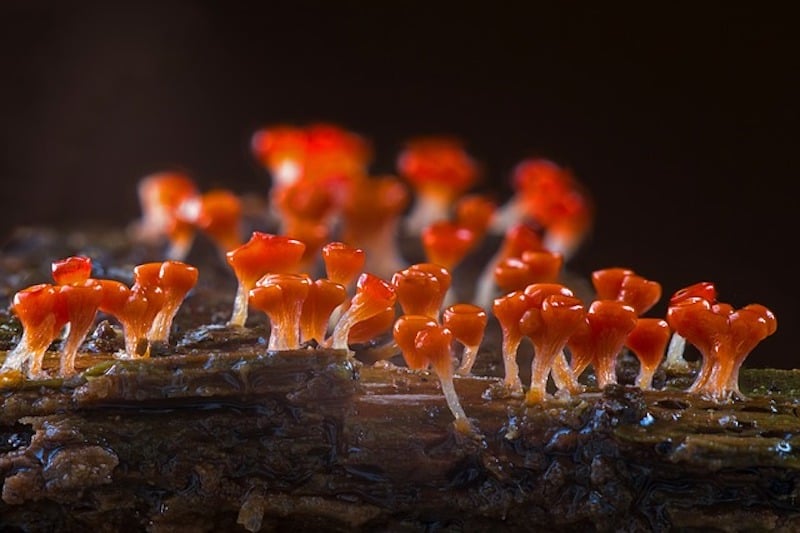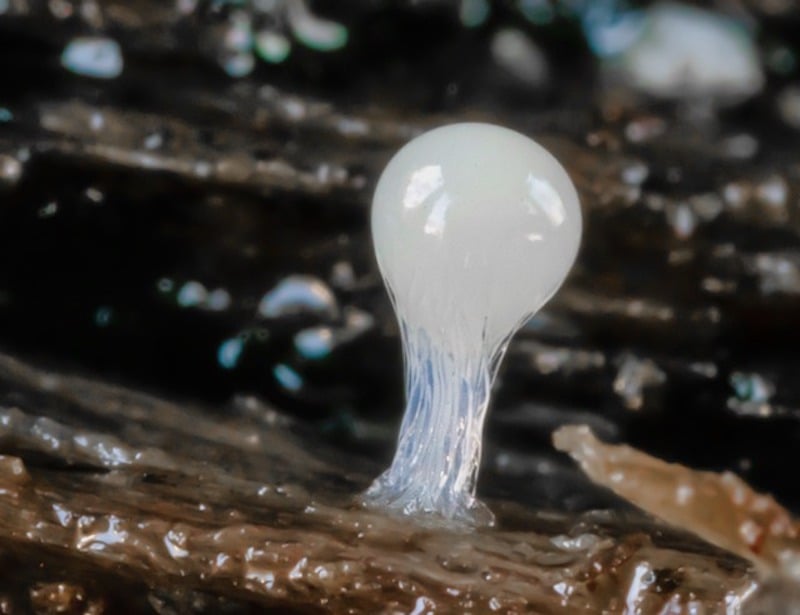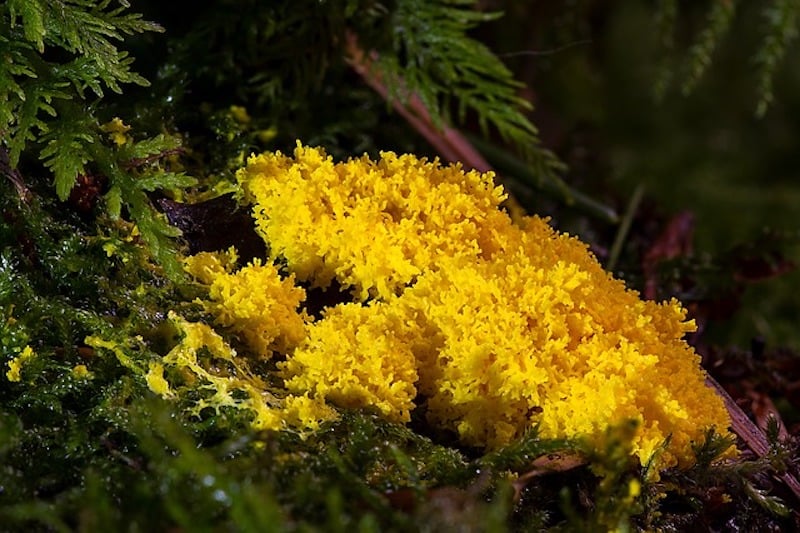
Written by Mallory Lindsay
What can communicate without a brain, move without legs, and are real-life “Transformers?”
SLIME MOLDS. They look like something from a scary movie, lurking across yards in search of human brains—but these oozing blobs of slime are truly fascinating (and perfectly harmless) organisms.
In all honesty, they have been my favorite backyard finds since my first naturalist class when our teacher laughed as someone pointed to a yellow pile of grossness and commented that feral cat must have ‘thrown up’ on the trail.
“Nope,” the guide replied, “Just slime mold.”
I was hooked. I hope you will be too with these slime-tastic slime mold facts.

Top 9 Secret Facts About Slime Molds:
- Once thought to be in the same groups as mushrooms (fungi), now they are classified as a type of amoeba (single-celled organism).
- There are over 900 species.
- They are most commonly found in lawns, soil, floors of forests, and even on rotting logs. In tropical areas they will be found on fruits and tree canopies. In cities, slime mold can be located in leaf mold, mulches, gutters, and inside air conditioners, especially those that may have blocked drainage.
- Don’t worry, slime molds are harmless. They prefer feasting on bacteria from decaying leaves rather than your brain. However, if you have allergies, the spores may cause some sneezing.
- Some slime molds take odd shapes and have names that match- like ‘dog vomit’ and ‘bird poop.’
- Slime molds reproduce by releasing their version of seeds, called spores.
- When you see slime mold in your yard or on a tree trunk, it’s really lots of slime molds coming together, like a transformer or a lego ship.
- Most slime molds spend their days alone and unseen (microscopic). However, when food gets scarce, they slowly move towards one another to create a new structure to produce spores that will be taken to a new place by the wind.
- Although they do not have brains, researchers have found that they have the ability to ‘learn’ and go through mazes.
As you can see, slime molds truly get a bad reputation (if one at all) in the backyard world. Consider yourself lucky when you come across an oozing glob of goo in your mulch pile.
You just got a rare glimpse into the world that most never get to see without a microscope.

About the author: Mallory Lindsay, aka Ms. Mallory, is a wildlife educator, science communicator, and visual storyteller. She is based in the USA where she travels as a media presenter and impact campaign consultant for ‘grassroots’ conservation projects. For more, check out her website, Instagram, and live nature classes offered every Wednesday!


I’m wondering if the slime mold preserves all its genetic material when it forms spores. For every nucleus a spore…
That is a fabulous question! We are not experts here, but we did enjoy this article from Orion Magazine by Lacy M. Johnson that dives into the genetic and evolutionary background of slime molds. It does seem that each spore has a whole bundle of genetic information… https://orionmagazine.org/article/what-slime-knows/